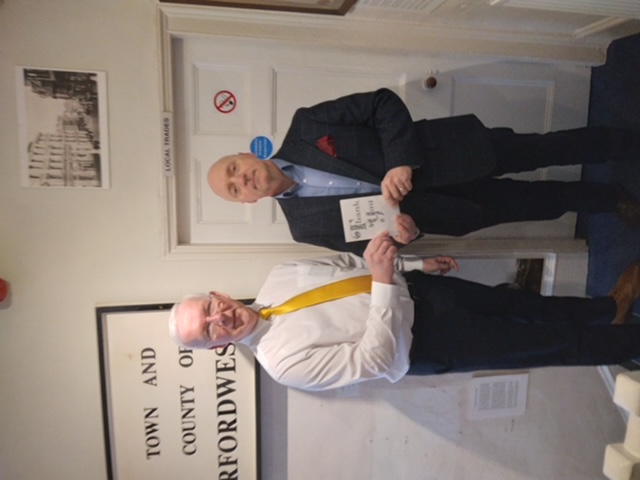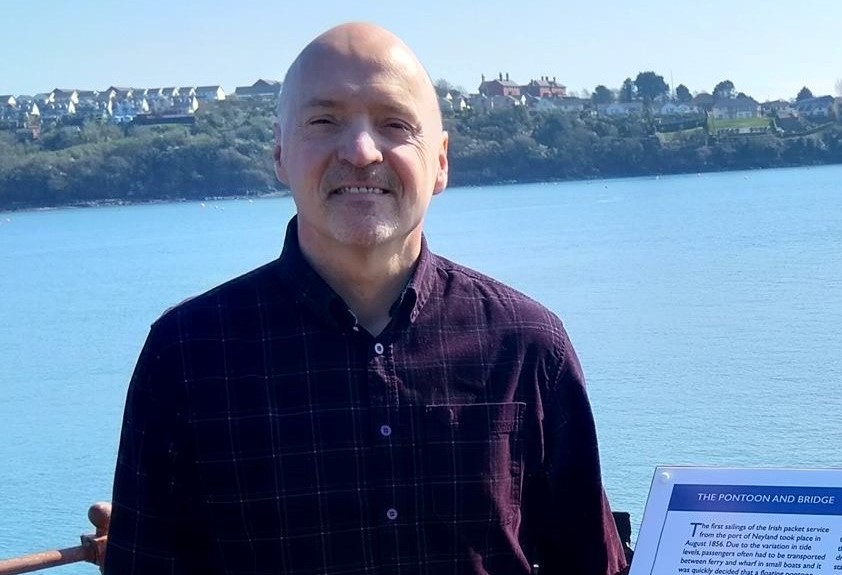SIMON HANCOCK points to a thick ledger file that sits on his dining table.
Inside are hundreds of notes relating to a woman from Loveston by the name of Olivia Powell who was tried in 1693 for being a witch. Locals became concerned about Olivia’s morals after she was seen killing geese, overturning hayricks and wantonly injuring people in her community. Following her trial in Haverfordwest, Miss Powell was acquitted.
“But the frustrating thing is that nobody knows what happened to her afterwards,” says Dr Hancok.
“There’s no doubt that the Olivia Powell trial is a fascinating account that opens up a great deal of information concerning Pembrokeshire in the 17th century, and this is what makes history such an intriguing subject.
” It’s not just about the facts of what happened, but the social and human implications that relate to those events.”
Simon goes on to quote another beautiful example of Haverfordwest’s social history.
“CADW discovered an oyster shell when they were carrying out excavation work at the Augustinian Priory in Haverfordwest a few years ago. Inside the shell was some red pigment that was identical to red paint found on the priory wall.
“So the monks had found the oyster, they’d eaten what was inside and then they used the shell as a palette to mix their paint. Items like this offer a fascinating insight into the social history of the day.”
This week Dr Simon Hancock celebrates his 25th year as curator of the Haverfordwest Town Museum and after spending an hour in his company, it’s obvious how carefully he hones his knowledge to ensure that it becomes easily accessible to all. He has staged no fewer than 42 exhibitions since being curator, and if you believe this means regurgitating boring facts and figures, think again. Dr Hancock’s exhibitions, as well as his talks, bear testimony to his ability to make history come alive.
“One of the most fascinating exhibitions we ran was based on the work of the former art master at Haverfordwest grammar school, David Lindley,” he continues.
“He’d painted scenes of Haverfordwest town during the 1940s and ‘50s with the result that people were able to see just how magnificent the town looked in those days.
“And another hugely popular exhibition was that of William Roblin, the last man to be hanged in Haverfordwest Castle on Easter Monday,1821, following the murder of his former employee, William Davies.”
It is believed that William Roblin was hanged at 6am at the Castle Gate, with thousands of people gathering to watch his execution from the back of Dark Street.
Simon has always nurtured a strong interest in history, stemming back to his former role with Pembrokeshire National Park at Carew Castle. He also worked as a self-employed genealogist and then, in 1996, became a founder member of the Haverfordwest Town Museum.
“The castle museum was originally based in the local authority records offices in county hall but following a decision by Dyfed County Council, the museum was closed down in 1994.
“Naturally this raised some concerns, given that Haverfordwest is a town which has 900 years of fascinating history.
” It was one of the biggest towns and ports in the whole of Wales, it was a mediaeval borough which had five mediaeval gates and was the only town in Wales to have three parish churches. It also had a friary, a priory and an extremely wealthy and cosmopolitan community.”
The town was founded in the early twelfth century by the Flemish chieftain known as Tancard. It received its first Royal Charter in 1207 by King John and then, in 1479, was granted Freedom from the Lordship of Haverford.
“And so it became a governing town with a mayor and a sheriff which meant it was a county in itself. No other town in Wales was given that distinction and then in 1536, it was recognised as being the county town of Pembrokeshire.”
Given the town’s great historical wealth, local business people and civic leaders set up a museum trust in 1994. Two years later, a lease was signed enabling them to open the town museum in the Old Governors’ house situated in the castle grounds.
Later this summer the museum will be temporarily relocated to a unit on the Riverside Shopping Centre while work is carried out at the castle as part of the Heart of Pembrokeshire Project.
“The museum will probably remain on the Riverside Centre for three or four seasons and then, once the Heart of Pembrokeshire Project is complete, it will move back to the Governor’s House,” explained Simon.
“But this will give us a completely blank canvas to start re-telling the story of Haverfordwest in a totally different way to how it’s been told over the past 27 years.
“Yes, it’s a very exciting time and it’s a huge honour to be part of the future development, having been involved with it from the very beginning.
“But this is what history is all about…wanting to inspire others and ensure that it continues to be enjoyed by future generations.”




















